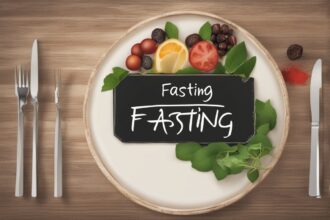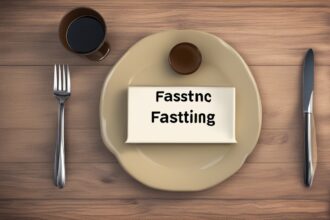Have you ever wondered what fasting is and why it’s become such a buzzword in the health and wellness world? Whether you’re curious about weight loss, mental clarity, or spiritual growth, fasting might just be the ancient practice with modern benefits you’ve been looking for. In this comprehensive guide, we’ll dive deep into fasting explained, breaking down what it is, how it works, and why so many people swear by it. From the science behind fasting to practical tips for beginners, I’ve got you covered. Let’s explore this transformative practice together and see if it’s right for you!
What Exactly is Fasting? Understanding the Basics
At its core, fasting is the voluntary abstention from food and, in some cases, drink for a specific period. It’s not about starvation or deprivation but rather a structured way to give your body a break from constant digestion. Fasting has been practiced for centuries across cultures and religions—think Ramadan in Islam or Lent in Christianity—but today, it’s often used for health and wellness purposes. When we talk about fasting explained, it’s important to note that it’s not a one-size-fits-all approach. There are various types, each with its own rules and benefits, tailored to different goals like weight management or improved metabolic health.
The science behind fasting is fascinating. When you fast, your body shifts from using glucose (from food) as its primary energy source to burning stored fat through a process called ketosis (Horne et al., 2015). This metabolic switch can lead to numerous health benefits, which we’ll explore later. But first, let’s be clear: fasting isn’t just “not eating.” It’s a deliberate choice with intention, whether for spiritual, physical, or mental reasons.
The Different Types of Fasting: Which One Suits You?
Not all fasting methods are created equal, and understanding the variety is key to finding what works for you. Here’s a breakdown of some popular approaches to fasting, often discussed when fasting explained comes up in health circles:
- Intermittent Fasting (IF): This involves cycling between eating and fasting periods. Common methods include the 16/8 (fast for 16 hours, eat during an 8-hour window) or 5:2 (eat normally for 5 days, restrict calories to 500–600 on 2 days). It’s beginner-friendly and flexible.
- Water Fasting: This is a more intense approach where you consume only water for a set period, often 24–72 hours. It’s typically done under medical supervision due to its intensity (Johnstone, 2015).
- Juice Fasting: Instead of solid food, you drink fruit and vegetable juices. It’s less restrictive than water fasting but still provides a digestive break.
- Religious Fasting: Practices like Ramadan involve abstaining from food and drink from dawn to dusk for a month. It combines spiritual discipline with physical fasting.
Each type has unique benefits and challenges, so it’s worth experimenting to see what aligns with your lifestyle and goals. Always consult a healthcare provider before starting, especially for longer or stricter fasts.
The Science Behind Fasting: How It Impacts Your Body
Let’s get into the nitty-gritty of why fasting works. When you stop eating for an extended period, your body undergoes several physiological changes. First, insulin levels drop, which facilitates fat burning as the body turns to stored energy (Anton et al., 2018). Additionally, fasting triggers autophagy, a cellular “clean-up” process where damaged cells are repaired or removed, potentially reducing the risk of chronic diseases (Mattson et al., 2017).
Studies also suggest that fasting can improve brain health by increasing the production of brain-derived neurotrophic factor (BDNF), a protein linked to learning and memory (Mattson et al., 2018). Moreover, short-term fasting may reduce inflammation, a key driver of many health issues like heart disease and diabetes (Patterson & Sears, 2017). While the research is promising, it’s worth noting that most studies are short-term or conducted on animals, so long-term human data is still emerging. Still, the science of fasting explained shows it’s more than just a trend—it’s a potential tool for better health.
Health Benefits of Fasting: What You Can Expect
Now that we’ve covered the mechanisms, let’s talk about the tangible benefits of fasting. People often turn to fasting for weight loss, and for good reason—it can help create a calorie deficit and boost metabolism (Tinsley & La Bounty, 2015). But the perks go beyond shedding pounds. Here are some key advantages often highlighted in discussions of fasting explained in health contexts:
- Improved Metabolic Health: Fasting can enhance insulin sensitivity, potentially lowering the risk of type 2 diabetes (Horne et al., 2015).
- Better Mental Clarity: Many fasters report sharper focus during fasting periods, possibly due to stabilized blood sugar levels and increased BDNF.
- Heart Health Support: Fasting may lower blood pressure, cholesterol, and triglycerides, key factors in cardiovascular health (Patterson & Sears, 2017).
- Longevity Potential: Animal studies suggest fasting might extend lifespan by reducing oxidative stress and inflammation (Mattson et al., 2017).
Of course, results vary from person to person, and fasting isn’t a magic bullet. It’s most effective when paired with a balanced diet and healthy lifestyle. But these potential benefits make a strong case for giving it a try, don’t you think?
Common Challenges and How to Overcome Them
Let’s be real—fasting isn’t always a walk in the park, especially when you’re just starting out. Hunger pangs, irritability, and low energy are common hurdles. I’ve been there myself, feeling like I could eat my desk during my first 16/8 fast! But with a few strategies, you can make the process smoother. First, start slow. If you’re new to fasting explained in practice, try a 12-hour fast (like overnight) before jumping into longer windows. Hydration is also key—drink plenty of water to curb false hunger signals.
Another challenge is social eating. It’s tough to skip meals when friends or family are dining out. My tip? Plan your fasting windows around social events when possible, or sip on black coffee or herbal tea to feel included without breaking your fast. Lastly, listen to your body. If you feel dizzy or unwell, stop and eat something. Fasting should feel challenging but not harmful. With time, your body adapts, and those initial struggles often fade.
Practical Tips for Starting Your Fasting Journey
Ready to give fasting a shot? I’m excited for you! It can be a game-changer if done thoughtfully. To wrap up our deep dive into fasting explained, here are some actionable tips to help you begin safely and sustainably. Think of this as your starter kit to ease into the practice without feeling overwhelmed.
First, choose a fasting method that fits your routine. If you’re busy, intermittent fasting like 16/8 might be easiest since it aligns with most schedules. Next, prepare your body by cutting back on processed foods and sugar a few days before starting—this can reduce cravings during your fast. Also, break your fast gently with light, nutrient-dense foods like a smoothie or soup to avoid digestive discomfort. Most importantly, don’t rush it. Fasting is a skill, and like any skill, it takes patience to master.
In conclusion, fasting is a powerful practice with roots in history and growing support from modern science. Whether you’re drawn to it for weight loss, mental clarity, or spiritual reasons, understanding fasting explained is the first step to making it work for you. It’s not about perfection but progress—start small, stay consistent, and listen to your body. Remember, fasting isn’t for everyone, so consult a doctor if you have underlying health conditions or concerns. I hope this guide has shed light on what fasting is and inspired you to explore its potential. Have you tried fasting before, or are you just starting out? I’d love to hear your thoughts or questions—drop them below, and let’s keep the conversation going!
References
- Anton, S. D., Moehl, K., Donahoo, W. T., Marosi, K., Lee, S. A., Mainous, A. G., … & Mattson, M. P. (2018). Flipping the metabolic switch: Understanding and applying the health benefits of fasting. Obesity, 26(2), 254-268.
- Horne, B. D., Muhlestein, J. B., & Anderson, J. L. (2015). Health effects of intermittent fasting: Hormesis or harm? A systematic review. The American Journal of Clinical Nutrition, 102(2), 464-470.
- Johnstone, A. (2015). Fasting for weight loss: An effective strategy or latest dieting trend? International Journal of Obesity, 39(5), 727-733.
- Mattson, M. P., Longo, V. D., & Harvie, M. (2017). Impact of intermittent fasting on health and disease processes. Ageing Research Reviews, 39, 46-58.
- Mattson, M. P., Moehl, K., Ghena, N., Schmaedick, M., & Cheng, A. (2018). Intermittent metabolic switching, neuroplasticity and brain health. Nature Reviews Neuroscience, 19(2), 63-80.
- Patterson, R. E., & Sears, D. D. (2017). Metabolic effects of intermittent fasting. Annual Review of Nutrition, 37, 371-393.
- Tinsley, G. M., & La Bounty, P. M. (2015). Effects of intermittent fasting on body composition and clinical health markers in humans. Nutrition Reviews, 73(10), 661-674.






